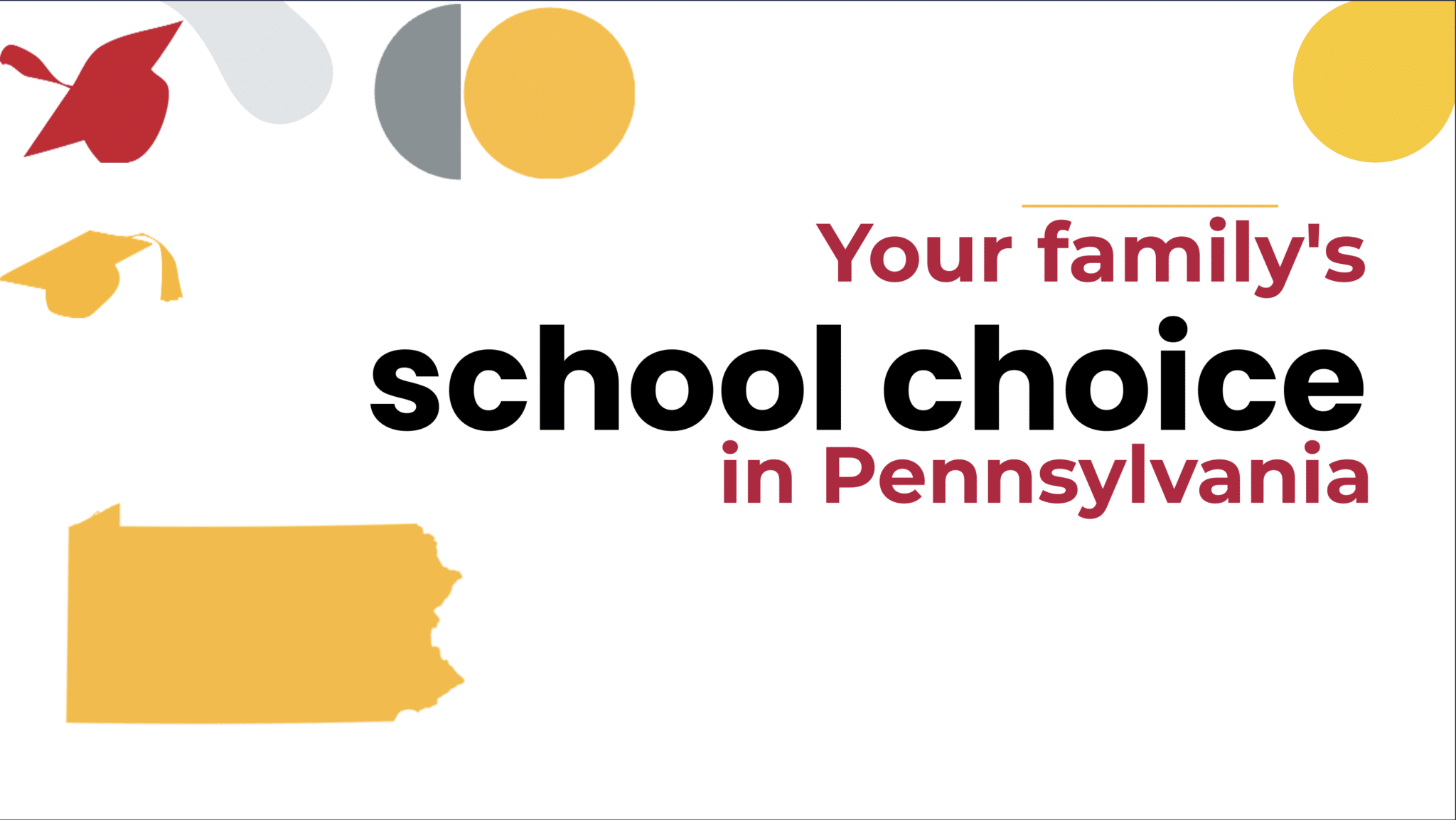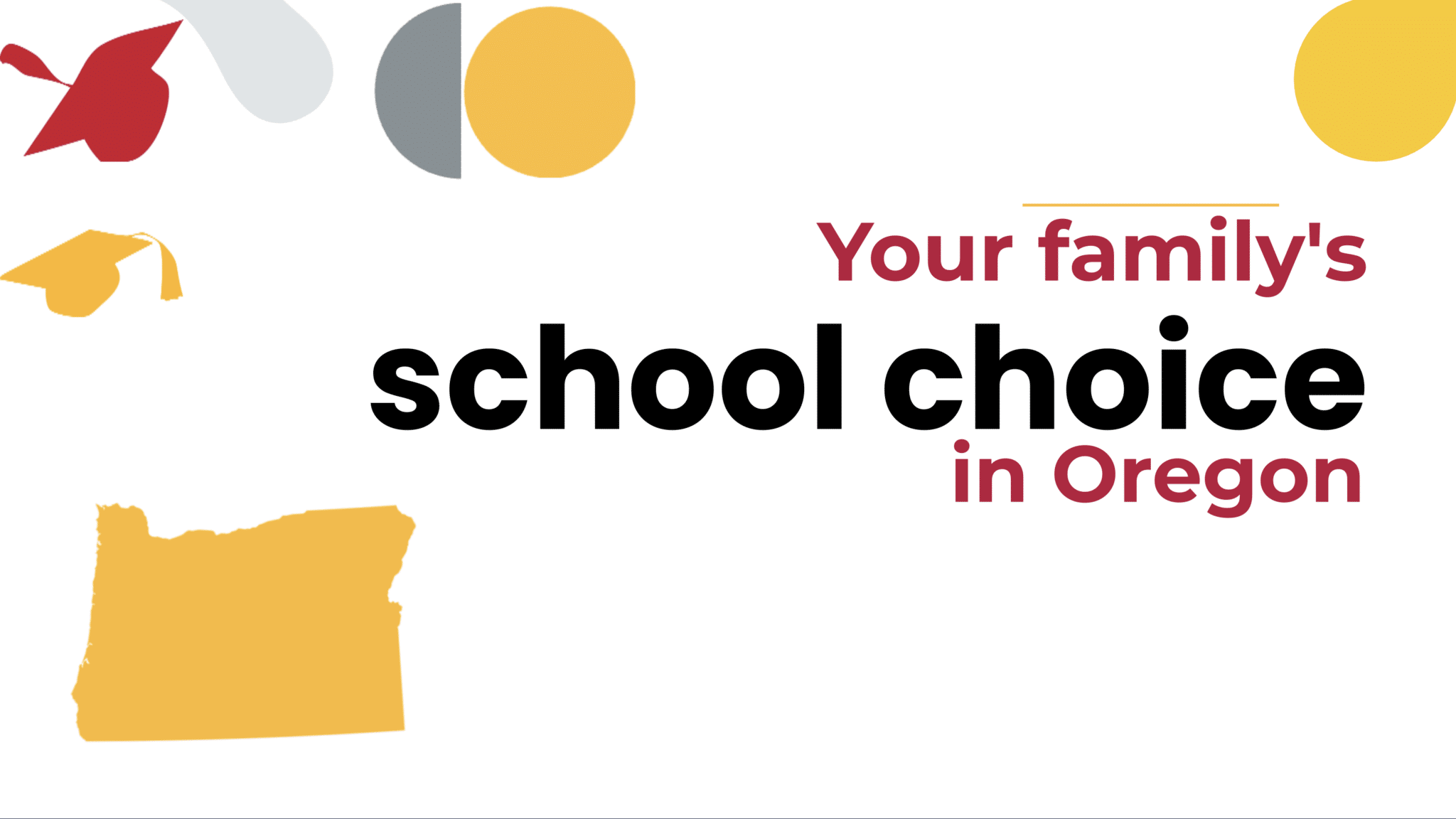Choosing a school? You’ve got options.
Deciding where to send your child to school is a big decision, and you have access to more K-12 education options than you might realize. Navigating your school choice options in Pennsylvania can help you find a school where your child thrives! This post will breakdown the main types of schools available to you, as well as provide additional education resources and school choice news.
Pennsylvania families can choose from traditional public schools, public charter schools, public magnet schools, private schools, online learning, and homeschooling. We’ll also cover how microschooling and mix-and-match learning fit into the school landscape!
Looking for special education options? You can learn what special education services are available in Pennsylvania at the Ultimate Guide to Special Education.

- Traditional Public Schools
- Public Charter Schools
- Public Magnet Schools
- Private Schools
- Online Schools
- Homeschool
- Microschooling
Pennsylvania Traditional Public Schools
In Pennsylvania, 76.6% of all K-12 students are enrolled in traditional public schools. These schools are operated by districts, free to attend, open to all students, and funded by taxpayers. Did you know that, on average, Pennsylvania spends $17,884 per public school student each year?
In Pennsylvania, the state allows each district to set its own open enrollment policies. Open enrollment refers to whether parents can send their children to any public school, regardless of where it is located. So, Pennsylvania parents wanting to transfer their child to a different public school than the one they are assigned should contact their local school district about whether this is an option for them. Open enrollment is a valuable form of public school choice, expanding parents’ options and ensuring that their zip code isn’t the sole determiner of their education.
For a real-world example, check out Lancaster School District’s guidelines for both intradistrict and interdistrict transfers. Find out more about public schools in your state at the Pennsylvania Department of Education. You can also learn more about open enrollment at “Public Schools Without Boundaries: A 50-State Ranking.”
Pennsylvania Charter Schools
Charter schools are another important option for Pennsylvania families. Like traditional public schools, charter schools are public, free, and typically have no requirements for entry. What distinguishes charter schools is that they have extra freedom to innovate with learning methods and are accountable to authorizing bodies for results.
In Pennsylvania, 8.4% of all K-12 students attend a public charter school. Pennsylvania families can choose from more than 180 public charter schools, including several cyber charter schools. Each school has a charter which explains the school’s purpose and what specific community need it serves. That could look like a Spanish immersion program or a rigorous, literacy-based curriculum. If there are more families seeking admittance to a charter school than there are seats, a lottery system (like drawing random names out of a hat!) is usually used to determine admittance.
Free transportation is available to all Pennsylvania charter school students within their district. Transportation may be declined for elementary students living less than 1.5 miles or secondary students living less than 2 miles from their charter school, unless hazardous walking conditions exist. Students must live within 10 miles of the charter school’s nearest highway to qualify for transportation, including those residing outside the district. Students with special needs and an Individualized Education Program (IEP) are eligible for transportation assistance.
You can read about charter options at the Pennsylvania Coalition of Public Charter Schools.
Pennsylvania Magnet Schools
You can also choose magnet schools! These free public schools allow kids to zoom in on a specific learning track. At a magnet school, all the subjects are taught through the lenses of that specific track. If there is a magnet school near you with a theme that interests your child, this could be an exciting option to consider.
In Pennsylvania, 1.5% of all K-12 students attend a public magnet school. Pennsylvania has several magnet schools throughout the state. For example, Pittsburgh Public Schools, Erie Public Schools, and the School District of Philadelphia have magnet choices, among others. Pennsylvania’s magnet choices range from Mandarin and Spanish programs to pre-engineering and performing arts. You can contact your school district to see if there are any options near you.
Philadelphia families, keep in mind that the district has implemented a new lottery admissions process for the 2023-2024 school year and beyond!
Pennsylvania Private Schools
Private schools are nonpublic schools that charge tuition. Private schools offer a unique learning environment that may be smaller in size, pass on a religious tradition, or provide a curriculum not available in your district school.
There are more than 2,000 private schools across the state of Pennsylvania. The average tuition for private schools in the state is $10,477 for elementary schools and $16,145 for high schools.
Some Pennsylvania families are eligible for state-run scholarship programs. Children from low or middle income families may be eligible for the Educational Improvement Tax Credit. These programs received a boost in Pennsylvania’s fiscal budget for 2022-2023, allowing an estimated additional 31,000 students to receive school choice scholarships. In Pennsylvania, 4% of all K-12 students are participating in a private school choice program.
Learn more about private schools and scholarship opportunities at Children’s Scholarship Fund-Philadelphia, CEO-America, Business Leadership Organized for Catholic Schools (BLOCS), the Extra Mile Education Foundation, the Pennsylvania Affiliate of the Council on American Private Education and Private School Review: Pennsylvania.
Pennsylvania Online Learning
Don’t overlook online learning, which offers a uniquely flexible learning environment that meets a variety of family needs. Whether your child wants to accelerate learning or needs a quieter environment, you may be interested in considering virtual school. If you choose online learning in Pennsylvania, you’re in good company. More than 60,000 Pennsylvania students attended a cyber charter school in 2020-2021.
Pennsylvania offers several free, full-time online learning options for students, such as PA Virtual Charter School, Reach Cyber Charter School, Agora Cyber Charter School, Commonwealth Charter Academy, PA Leadership Charter School, PA Cyber Charter School, Central PA Digital Learning Foundation, PA Distance Learning Charter School, and Insight PA Cyber Charter School. Esperanza Cyber Charter School and ASPIRA Bilingual Cyber Charter School also serve grades K-12 statewide; these two schools offer special programming for bilingual students.
Students in grades 6-12 can also consider 21st Century Cyber Charter School, and students in grades 7-12 can consider Achievement House Cyber Charter School. Finally, students between the ages of 17 and 20 who are seeking to finish their high school diploma can choose Passport Academy Charter School. You can find contact information for these cyber charter options at the Pennsylvania Department of Education.
After a student has been accepted into a cyber charter school, his or her family must complete withdrawal paperwork as their assigned school to ensure that there are no gaps in enrollment and that funding follows the child.
In Pennsylvania, most statewide online school options are charter schools. But, there are also some districts that have developed online options, like the School District of Philadelphia’s Virtual Academy, Pittsburgh Public Schools’ Online Academy, Allentown School District’s Virtual Campus, and Reading Virtual Academy. Contact your district to learn about any online options they may offer.
To read more about online learning in Pennsylvania, check out the Digital Learning Collaborative’s state profile.
Pennsylvania Homeschooling
Homeschooling is another school option for Pennsylvania families. All 50 states permit homeschooling, which is the process of parents educating students at home.
In Pennsylvania, 2.1% of all K-12 students are homeschooled. If you’re using the homeschooling statute in Pennsylvania, it is required that you provide notice of your intent to homeschool by submitting a notarized affidavit at the time of choosing homeschool and annually by August 1. It is recommended that you formally withdraw from your current school so your student is not marked truant.
The state requires homeschooling parents to teach specific subjects (like English, science, and health) and also requires standardized testing in specific grades if you are using the homeschooling statute. Note that your homeschooled student in Pennsylvania may still be eligible to participate in sports or activities at your local public school; if you are interested, ask your district about their policies. Also, homeschoolers with special learning needs are eligible to receive special education support and resources from local public school districts.
Read more about Pennsylvania homeschooling at the Home School Legal Defense Association, or check out the LCC Homeschool Association of PA or the Christian Homeschool Association of Pennsylvania.
Pennsylvania Microschools and Mix-and-Match Learning
Today, many Pennsylvania families are mixing and matching school options to come up with new ways to personalize education. Microschools are one of these ways. A microschool refers to students gathering together in a small group – with adult supervision – to learn, explore, and socialize. Microschools can take a variety of shapes and legal forms, from homeschoolers coming together at an enrichment center to a private school committed to small classrooms. What microschools share in common is a distinct commitment to small-group learning, close-knit relationships, and an emphasis on children as individual learners.
Here are real examples of microschools and innovative learning resources in your state:
- KaiPod Learning partners with local groups in Harrisburg, Manheim, and Downingtown, Pennsylvania to make learning centers available to students.
- Thrive Space is a microschool offering supplemental and creative education options, from mixed media sculpting classes to cooking classes.
- The Enrichment Center of Western PA is a non-profit cooperative serving Western Pennsylvania families with extra learning opportunities.
Remember, microschooling is more a mentality than a specific legal distinction in most cases. Often, a family participates in a microschool while legally homeschooling, or being enrolled in a private or online school.
[nscw_school_finder]
Microschools and Mix-and-Match Learning
How can it empower parents and help kids achieve their dreams?
7 Step Guide
Tips to help you find a school where your daughter or son will learn, succeed, and be happy.
Education Resources for
Pennsylvania Parents
For additional information about school choices in Pennsylvania, visit these resources:
Every state is different when it comes to school choice options.
Sign up below to get a detailed comparison:
"*" indicates required fields












